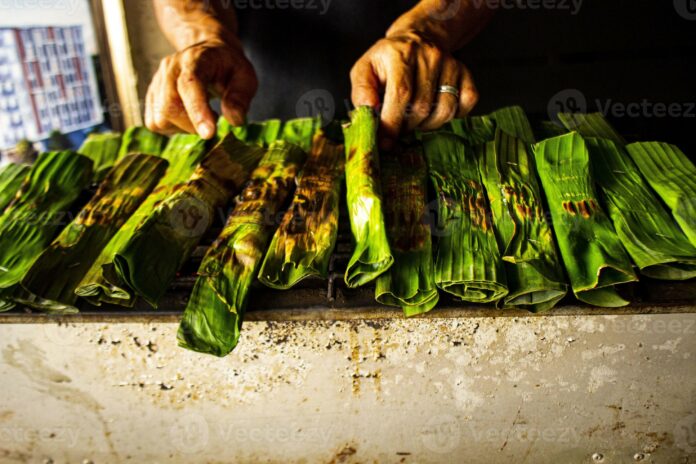Introduction
Leaves are extraordinary structures that play a vital role in the life of plants. Not only do they serve as the primary sites for photosynthesis, but they also contribute to plant respiration, transpiration, and nutrient transport. In this article, we will unravel the mysteries behind leaf anatomy and explore the fascinating process of photosynthesis—the incredible transformation of sunlight into food. Join us as we journey through the microscopic wonders and uncover where the magic of food production occurs within a leaf.
Importance of Leaves in Plant Biology
A. Overview of Leaf Functions
Leaves are the powerhouses of plants, harnessing energy from sunlight and converting it into chemical energy through photosynthesis. They also play a role in gas exchange, water regulation, and nutrient transport within the plant.
B. Significance of Photosynthesis
Photosynthesis is a crucial biological process that sustains life on Earth. It not only produces food for plants but also generates oxygen, which is vital for the survival of many organisms, including humans.
Leaf Anatomy
A. Overview of Leaf Structure
Leaves are composed of various layers and tissues that work together harmoniously. They consist of an outer epidermis layer, a mesophyll layer, and vascular tissues, including xylem and phloem.
B. Chloroplasts: The Food Factories of Leaves
Chloroplasts are specialized organelles found within leaf cells that are responsible for photosynthesis. These tiny green structures contain chlorophyll—a pigment that captures light energy and initiates the process of converting it into food.
Photosynthesis: The Process of Food Production
A. The Role of Chlorophyll
Chlorophyll pigments, particularly chlorophyll a and chlorophyll b, are crucial for capturing light energy. They absorb specific wavelengths of light, primarily in the red and blue regions of the spectrum, while reflecting green light—giving leaves their characteristic color.
B. Light Absorption and Energy Conversion
When chlorophyll molecules absorb light energy, it excites electrons within them. These energized electrons are then used to initiate a series of complex chemical reactions, ultimately converting light energy into chemical energy.
C. Carbon Dioxide Uptake and Oxygen Release
Leaves possess tiny pores called stomata, primarily located on the underside of the leaf. These stomata allow for the exchange of gases, with carbon dioxide entering the leaf and oxygen being released as a byproduct of photosynthesis.
D. Sugar Synthesis and Storage
During photosynthesis, carbon dioxide and water are transformed into glucose—a simple sugar that serves as the primary source of energy for plants. Some of this glucose is utilized immediately by the plant, while the rest is converted into other complex carbohydrates, such as starch, for storage.
Mesophyll Cells: Sites of Photosynthesis
A. Palisade Mesophyll Cells
Palisade mesophyll cells are elongated cells located near the upper surface of the leaf. They are rich in chloroplasts and are primarily responsible for capturing light energy during photosynthesis.
B. Spongy Mesophyll Cells
Spongy mesophyll cells are located beneath the palisade layer and have a looser arrangement. They contain air spaces that facilitate the diffusion of gases, allowing for efficient gas exchange during photosynthesis.
Chloroplasts: Powerhouses of Photosynthesis
A. Chloroplast Structure
Chloroplasts have a unique structure optimized for photosynthesis. They are surrounded by a double membrane and contain an inner membrane system called thylakoids, stacked into grana.
B. Thylakoid Membranes and Pigments
Thylakoid membranes house the pigments, including chlorophyll, which absorb light energy. These pigments are organized within photosystems, complexes that work together to capture light and transfer energy.
C. Stroma: Where Sugar Synthesis Occurs
The stroma is the fluid-filled space within the chloroplast. It contains enzymes that catalyze the chemical reactions involved in converting carbon dioxide and water into glucose during the Calvin cycle—a series of reactions within photosynthesis.
Stomata: Regulating Gas Exchange
A. Stomatal Structure and Function
Stomata are small openings surrounded by specialized cells called guard cells. They control the opening and closing of the stomatal pore, allowing for the exchange of gases between the leaf and the surrounding environment.
B. Carbon Dioxide Uptake and Water Loss
When stomata open, carbon dioxide diffuses into the leaf from the atmosphere. At the same time, water vapor is released through a process called transpiration. This exchange of gases is essential for photosynthesis and maintaining leaf hydration.
Vascular Tissues: Transporting Nutrients
A. Xylem: Transporting Water and Minerals
Xylem is a complex network of microscopic tubes that transport water and minerals absorbed by the roots throughout the plant. This vascular tissue plays a crucial role in delivering water to the leaf cells involved in photosynthesis.
B. Phloem: Distributing Sugars
Phloem is another type of vascular tissue responsible for the transport of sugars, primarily glucose, from the leaf to other parts of the plant. This allows for the distribution of food resources to areas of growth, storage, or other metabolic needs.
Factors Affecting Photosynthesis
A. Light Intensity and Quality
The intensity and quality of light significantly impact the rate of photosynthesis. Plants require an optimal level of light to maximize their energy capture and food production.
B. Carbon Dioxide Availability
Sufficient carbon dioxide is necessary for efficient photosynthesis. Adequate ventilation and access to fresh air ensure an ample supply of this essential gas.
C. Temperature
Photosynthesis is temperature-sensitive, with optimal rates occurring within specific temperature ranges. Extreme temperatures, either too high or too low, can negatively impact the process and reduce food production.
Conclusion
Leaves are remarkable structures that harbor the intricate machinery responsible for turning sunlight into the sustenance that fuels plant life. Through the process of photosynthesis, chloroplasts within mesophyll cells convert light energy into chemical energy, producing sugars that serve as the plant’s food source. Understanding the anatomy and functionality of leaves provides us with a deeper appreciation for the complexities of nature’s green alchemists. As we marvel at the beauty of leaves, let us also recognize their pivotal role in sustaining life on Earth, reminding us of the interconnectedness and brilliance of the natural world.


